Discover 10 Highlights from Art Basel Paris 2025
The fair’s fourth edition was a masterclass in blending blue-chip masterpieces with contemporary edge

Art Basel Paris now in its fourth edition, has firmly cemented the French capital’s newly renewed status as a global epicenter of art. Taking place from October 22-26, it was the second year that the French show was held in the recently restored venue of the 1900 Paris Exposition, a site boasting a classic stone exterior with Art Nouveau iron and glasswork; a spectacular example of Beaux-Arts architecture.
This year’s edition was a masterclass in blending blue-chip masterpieces with contemporary edge, drawing an elegant and sophisticated crowd and commanding a level of market gravitas that rivaled its Swiss predecessor in June. Under the soaring glass roof, 206 international galleries gathered to present works that spanned a century of art—presenting everything from blue-chip Modern masters to the most in-demand contemporary stars.

The temperature check began immediately with the new, exclusive “Avant-Première” V.V.I.P day taking place on the afternoon of October 21, which allowed all 206 galleries to each allocate six guest passes, each with a plus one. The Global Patrons Council, a group of some 180 of the world’s most important private collectors, were also all given a pass. The blue-chip sales here were swift and robust. Leading the charge was Hauser & Wirth, who placed a monumental Gerhard Richter—an Abstraktes Bild from 1987—for $23 million, setting a decisive tone.
The fair received a clear boost from the exceptional quality of Paris’s museum exhibitions that took place during art week. This was headlined by the official inauguration of the expansive new Fondation Cartier for contemporary art, housed in a stunning Jean-Nouvel-designed structure near the Louvre. Collectors were also in town to see an expansive Gerhard Richter exhibition at the Fondation Louis Vuitton, and a major George Condo survey show at the Musée d’Art Moderne de Paris.
Alongside the main galleries presented on the lower floor, upstairs, there were also many exciting discoveries to be made, with two curatorial, thematic sectors. The Emergence section is dedicated to 16 solo presentations by emerging artists and younger galleries, which offered an injection of fresh energy. Premise, meanwhile, offered ten focused, historical projects, often incorporating works predating 1900.
Below, see ten highlights from the fair.

1. Gerhard Richter at Hauser & Wirth
One of the most significant moments of the Art Basel Paris opening was the swift sale of Gerhard Richter’s monumental 1987 work, Abstraktes Bild (Abstract Painting), at Hauser & Wirth booth to a European collector for $23 million. The painting is a dense, multi-layered field of color—a magnificent blend of crimson, deep teal, and charcoal-grey—where the artist’s signature squeegee technique simultaneously builds up and then scrapes away paint. This process creates a textured, shimmering surface, blurring the line between spontaneous action and controlled composition, which has made the “Abstraktes Bild” series one of the most innovative bodies of work in post-war art. The significance of this price is amplified by the major survey of the artist’s work currently running at the Fondation Louis Vuitton in the city. The gallery also presented works by Rashid Johnson, Firelei Báez, and Bruce Nauman, including his neon sculpture Masturbating Man, which sold for over $4.7 million.
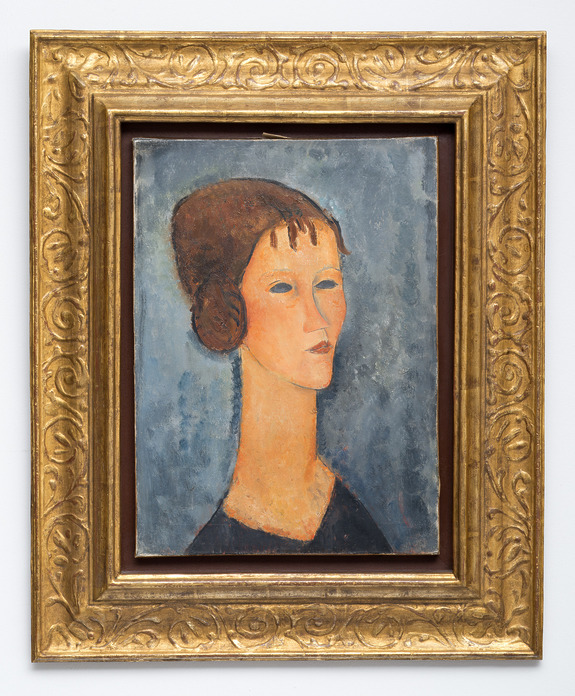
2. Amedeo Modigliani at Pace Gallery
Pace Gallery anchored its presentation with a historical masterpiece: Amedeo Modigliani’s 1918 canvas, Jeune fille aux macarons (Young Woman with Hair in Side Buns), which sold on the opening day for $10 million. The painting is a beautiful example of the artist’s mature style, instantly recognizable by the sitter’s elongated neck and the almond-shaped eyes—a signature technique that gives the artist’s portraits an intimate yet mysterious intensity. The work’s inclusion at Art Basel also served as a preview of a new strategic partnership between Pace and the Institut Restellini, headed by Modigliani scholar Marc Restellini. This collaboration, which coincides with the release of Restellini’s definitive catalogue raisonné, will lead to a major exhibition at the gallery in 2027.
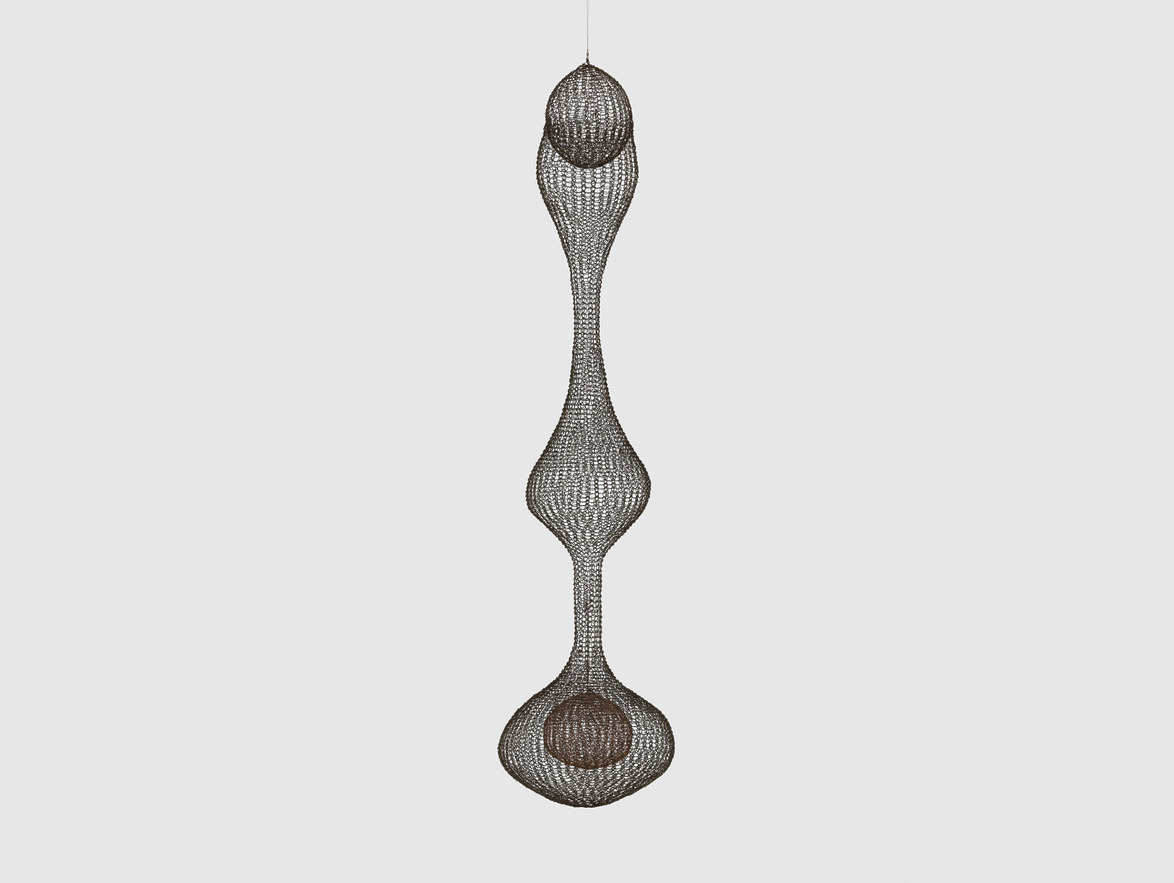
3. Ruth Asawa at David Zwirner
David Zwirner presented a stunning example of Ruth Asawa’s body of work: Untitled (S. 278, Hanging Nine-Lobed, Single-Layered Continuous Form), circa 1955. This stunning piece, crafted from brass wire, is an early and exceptionally rare example of the artist’s symmetrical, continuous forms. Standing nearly ten feet tall, the sculpture dramatically illustrates Asawa’s revolutionary concept of “drawing in space.” She meticulously created the complex, biomorphic shape by looping a single, continuous strand of wire, allowing the air to define the volume. This process rejects the traditional mass of sculpture, creating a form that is both weightless and fully realized. “I’m not so interested in the expression of something. I’m more interested in what the material can do. So that’s why I keep exploring,” Asawa once said. Currently, 300 works from her incredible six-decade career are on view at the Museum of Modern Art in New York through February. Other highlights at the booth were two new three-panel, large-scale edition works by Gerhard Richter as well as works by Joan Mitchell, and Bridget Riley, among others.
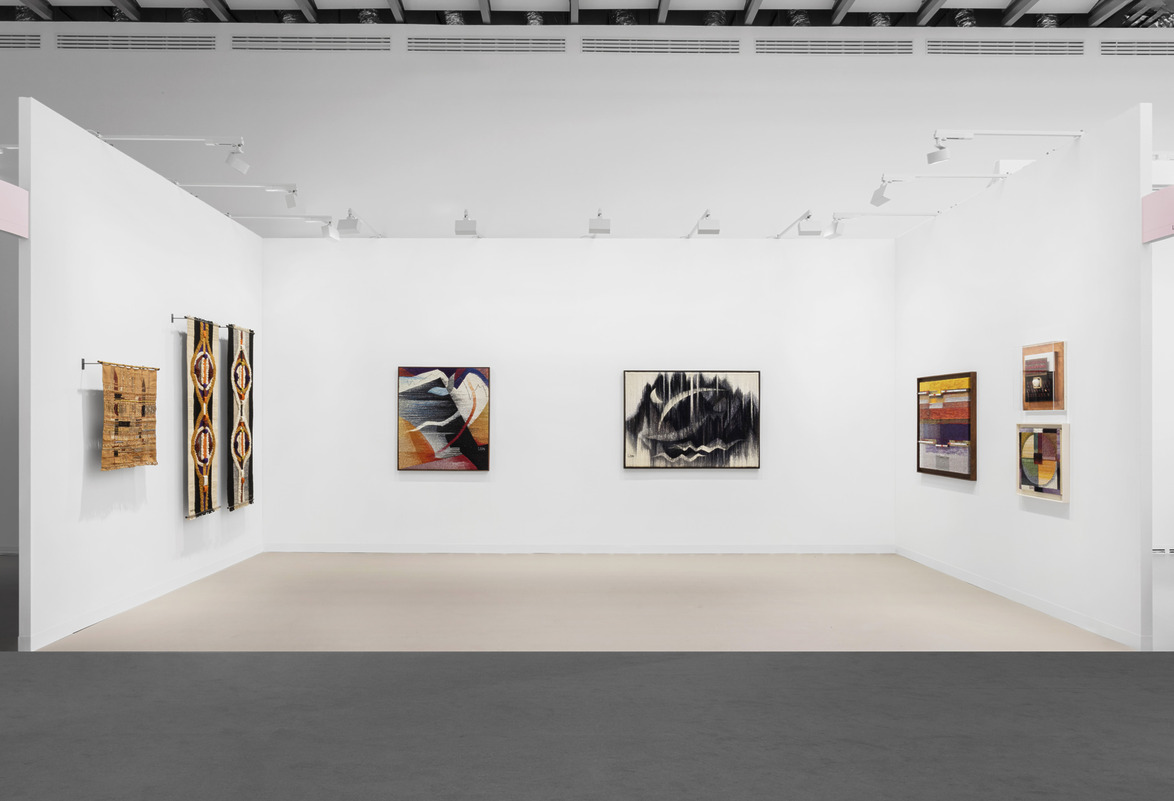
4. Lee ShinJa at Tina Kim Gallery
In the Premise sector, dedicated to curated, thematic presentations that may include work predating 1900, Tina Kim gallery made their debut at Art Basel Paris with a solo presentation of works by trailblazing Korean artist Lee ShinJa. At 95, Lee is a pioneering figure who defied convention to establish abstract textile art in Korea. The booth features a selection of mesmerizing, richly layered tapestries. The collector and curatorial response was positive with the gallery reporting selling four Lee ShinJa textile works to private collectors, one priced at $150,000, two priced at $90,000 each, and one priced at $70,000. A fifth Lee ShinJa textile work was on hold with a U.S. institution for acquisition at the time of reporting.
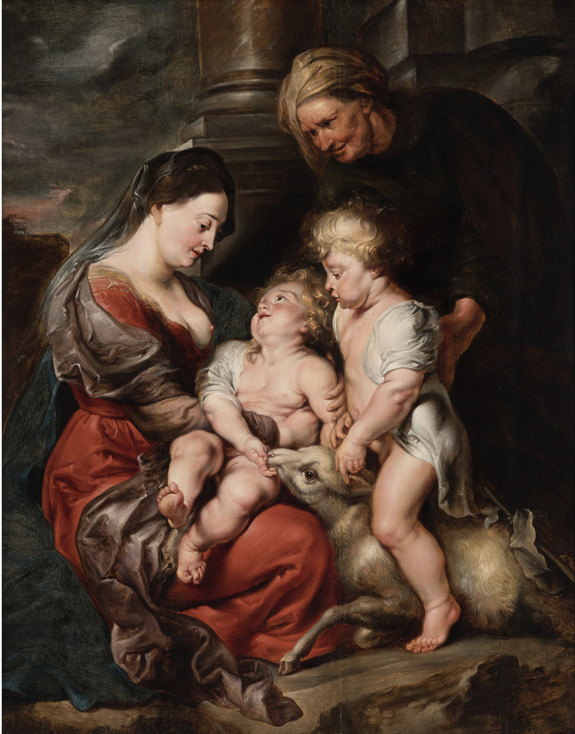
5. Peter Paul Rubens at Gagosian
Playing to the beat of their own drum, Gagosian secured a special exemption to present a 17th-century Old Master work: Peter Paul Rubens’s The Virgin and Christ Child, with Saints Elizabeth and John the Baptist (c. 1611–14). Breaking the fair’s post-20th-century focus, the mega-gallery received the green light in recognition of the painting’s exceptional quality and its resonance with modern and contemporary art. The recently rediscovered oil-on-panel—which previously sold for over $7 million at Sotheby’s in January 2020—is hailed by the gallery as a prime version of the popular subject. Likely a commission for private devotional purposes, Rubens’s masterwork was painted ten years prior to his celebrated commission from the French queen, the Marie de’ Medici cycle (1622–25), which remains on view at the Louvre. It is being exhibited in a curated dialogue with figures like with works by John Currin, Jadé Fadojutimi, Alberto Giacometti, Pablo Picasso, Auguste Rodin, Jenny Saville, and other artists who have shaped the course of postwar and contemporary art.
.
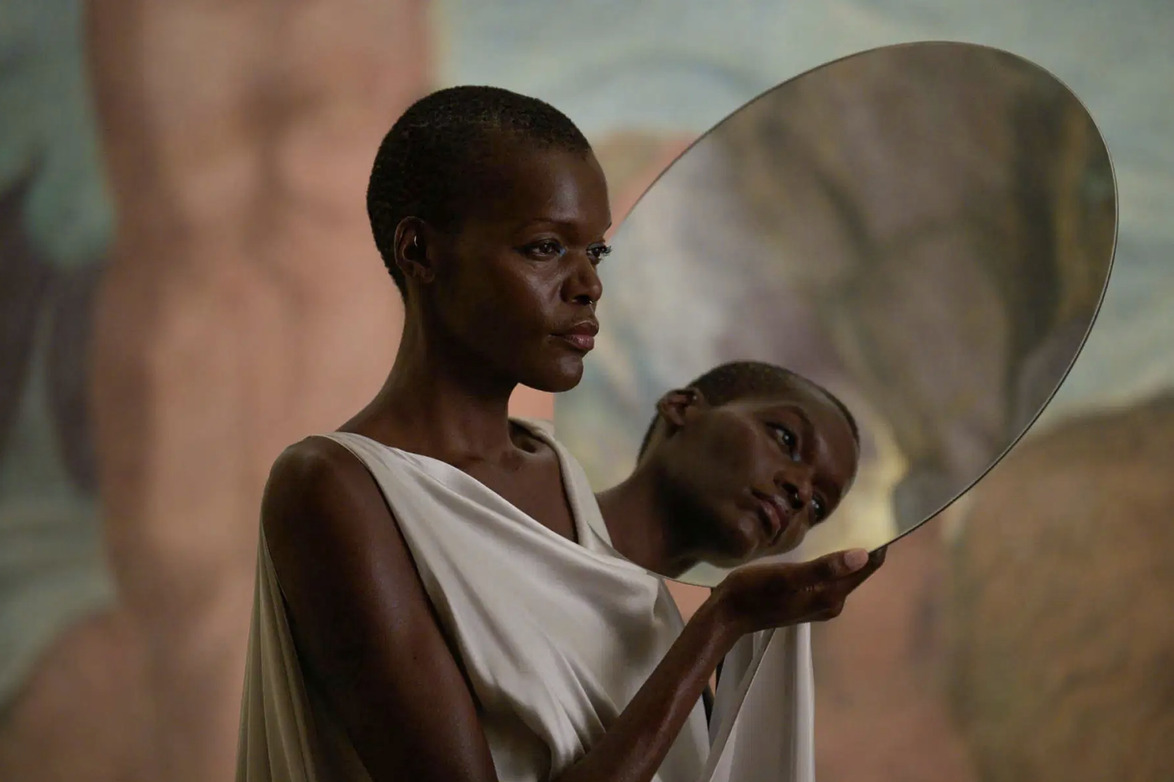
6. Isaac Julien at Jessica Silverman Gallery
Jessica Silverman Gallery presents an elegant photographic work from Sir Isaac Julien’s monumental new film, All That Changes You. Metamorphosis. The film is a ten-screen installation that was commissioned to celebrate the 500th anniversary of Palazzo Te in Mantua, Italy, where it is currently on view through February 1. Starring Gwendoline Christie and Sheila Atim, the work follows two prophetic, otherworldly celestial beings who emerge from the palazzo’s Renaissance frescoed walls to embark on a philosophical, time-traveling journey. The gallery had sold an edition of the stunning inkjet print, Satellite (All That Changes You. Metamorphosis), (2025).
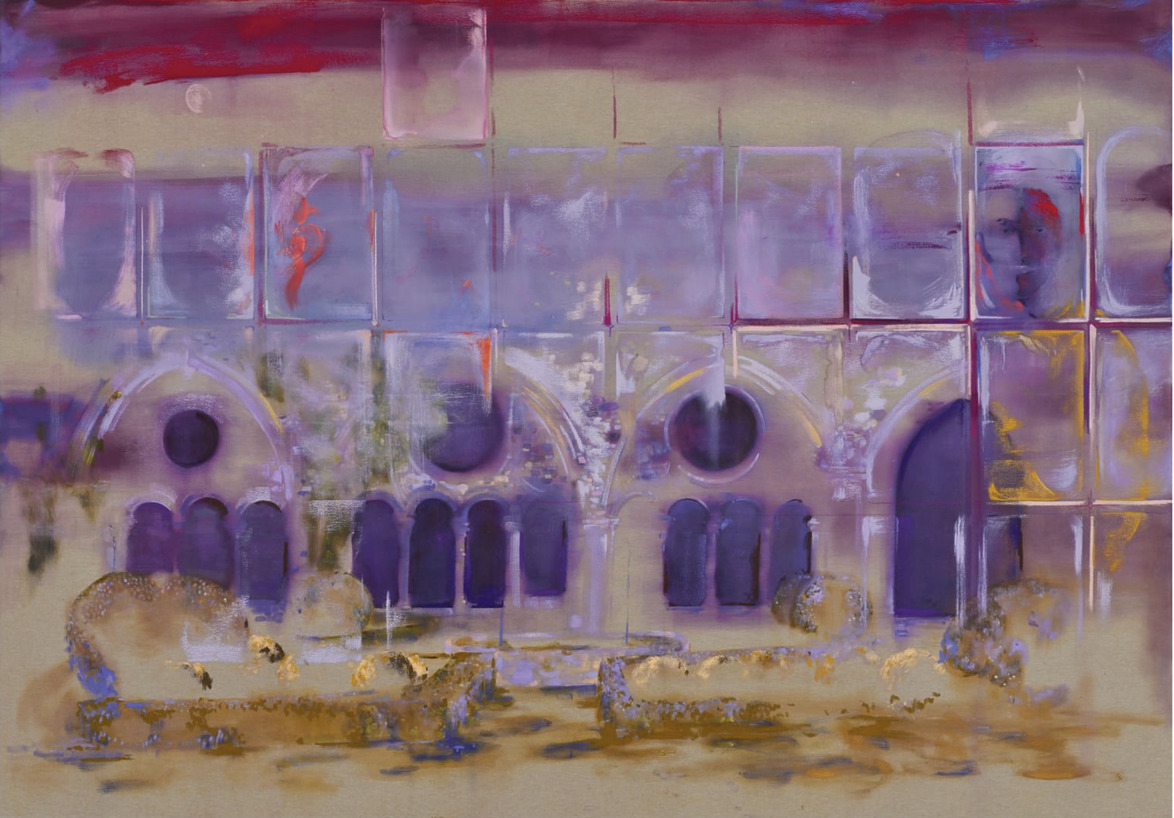
7. Djabril Boukhenaïssi at Mariane Ibrahim
A highlight for Mariane Ibrahim at Art Basel Paris is the work of French painter Djabril Boukhenaïssi, a young rising talent celebrated for his evocative, nocturnal paintings who joined the gallery’s roster last year. The large-format work on view is infused with Boukhenaïssi’s signature lyricism, which explores the delicate lines between memory, fiction, and the fading presence of the night. This piece serves as an homage to the poets Charles Baudelaire and Rainer Maria Rilke, as well as the haunting, dreamlike palette of Symbolist artist Odilon Redon. The fair presentation builds anticipation for the artist’s first solo exhibition with the gallery, “Once Upon a Midnight Dreary,” which opens in Chicago this November.
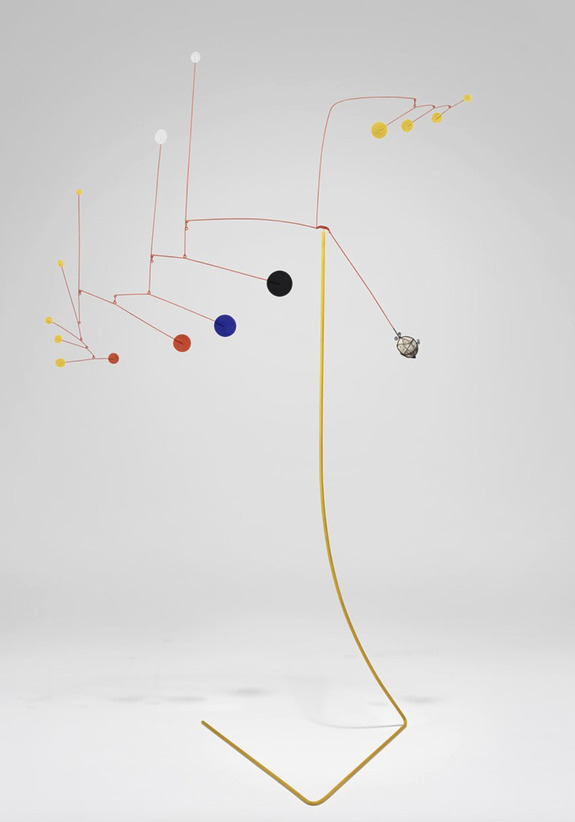
8. Alexander Calder at Gladstone Gallery
A centerpiece at Gladstone Gallery is Alexander Calder’s impressive standing mobile, Caged Stone on Yellow Stalk (c. 1955). This work, created during a particularly inventive period after Calder moved to his new studio in Saché, France, is a powerful example of the artist’s rare “Caged Stone” series, which grounds his characteristic ethereal motion with a raw, natural rock element. Its arrival at Art Basel Paris is perfectly timed, as the art world celebrates Calder’s enduring legacy with the recent opening of the Calder Gardens in Philadelphia and the Whitney Museum’s exhibition dedicated to the centennial of Calder’s Circus. Gladstone is asking $5.5 million for the piece.
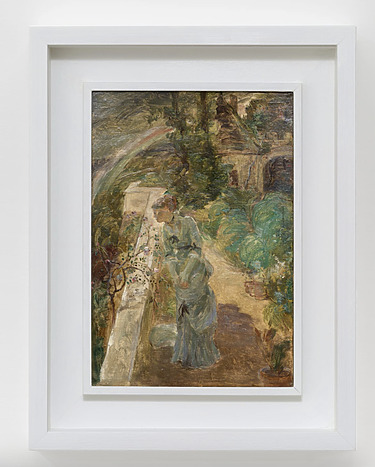

9. Marie Bracquemond at Pavec Gallery
In the Premise sector, Pavec Gallery stages a solo presentation of Impressionist painter Marie Bracquemond (1840-1916). Once critically acclaimed, Bracquemond was tragically pushed into early retirement by her husband’s persistent criticism. Now, more than a century later, Bracquemond is finally undergoing a major reassessment, marked by recent institutional acquisitions and record-setting auction prices. This booth marks the first time an international art fair has dedicated a solo show to an Impressionist woman artist with works all painted before 1900. Her still lifes, portraits, and landscapes from the 1870s-90s reveal a intimate, poetic gaze that transforms the everyday into art and cement her position as one of the “three great ladies,” alongside Berthe Morisot and Mary Cassatt.

10. Nefeli Papadimouli at the Pill
The Émergence sector, Art Basel Paris’s dedicated space for emerging galleries and artists, also witnessed market action during the VIP Avant-Première. The Paris and Istanbul-based gallery The Pill secured an early sale of a striking installation by Paris-based Greek artist Nefeli Papadimouli, selling the installation work Idiopolis (2024) to a French collector. Representative of the artist’s unique method of combining architecture, sculpture, and costume, the 15-meter-long Idiopolis was commissioned by the 17th Lyon Biennial where it would come alive during performances through movements of amateur performers wearing them.